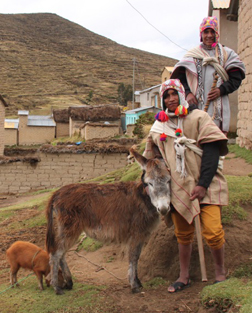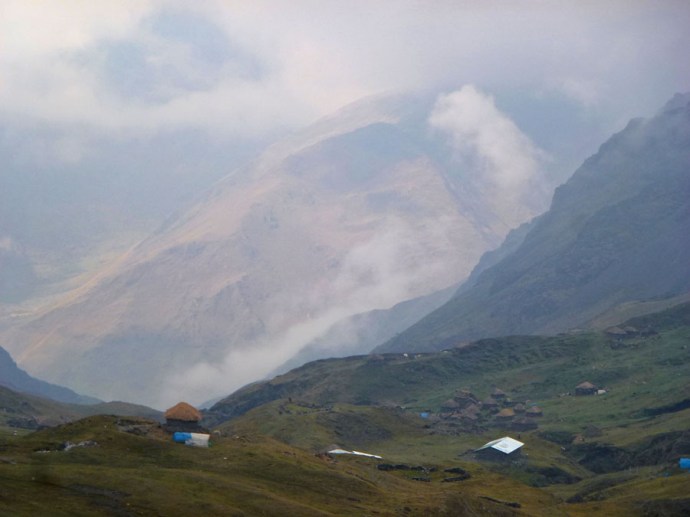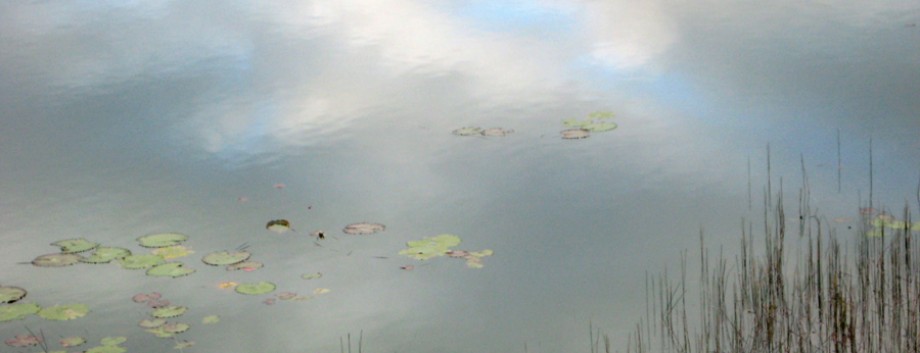There’s a point in spiritual development that—if we’re going any further—we recognize something so important that it will guide us the rest of our lives: It’s not all about us. It becomes a natural act to give back in whatever ways we can, large or small. Every time we do it’s an act of gratitude done—not with thoughts of getting something in return—but purely because it’s ours to do, representative of a deeper calling. I’ve written about ayni before, a practice embedded in the way of life in the Andes and other Indigenous cultures. Ayni is a Quechua word loosely translated as sacred reciprocity, a way of living within the universal law of balance and flow.
Ayni travels anywhere in your life: family, friends, those you know little or not at all. Acknowledgement to the Creator, Mother Earth, the ancestors and guides—those seen and unseen—comprising all the threads of this tapestry we call existence. It’s the validation of your presence in its make-up, a particular insight to global consciousness.
The practice has long been a focus in my personal life through what I’ve learned by consistent contact with Indigenous ways. I’m especially invested in exposing participants of my spiritual travel programs as I can—by writing about it, speaking of it and embedding automatic ayni within tuitions that goes to help support the spiritual leaders and their families who have offered their hearts to us. And it goes into the communities to benefit people the travelers have never met.
I make this point because it’s not a natural part of Western culture, which is particularly evident lately. We must be taught that ayni is ours to embrace so the world becomes a better place. In the last few years, I’ve become much more vocal about all this. I talk to people about standing beside me in this work. It does take a global village. Through Kenosis Spirit Keepers, we’ve created Kinship Ambassadors recognizing individuals who are supporting our initiatives in various ways. Our Kinship Circle acknowledges collaborative organizations we’ve worked with to jointly further our common missions.
A wonderful thing has unfolded over the last few years, something that makes my heart sing. Folks are stepping forward to support or completely sponsor areas of the work. They understand the value through their own experiences. I cannot begin to tell you how much it means that they are joining with the vision. This is ayni in action.
With this preface, I want to share a story leading to the most recent occurrence. During the 2014 Heart of the Andes program, we visited with Q’ero friends in Ccochamocco. We spent our days in ceremony, surrounded by the children, awestruck by the power of the land. Ccochamocco is a small, isolated village high in the Andes at 14,500 feet. Residents live in stone huts, with none of the most basic services we have, their alpaca close by. Life is hard there. Yet in its simplicity, in ayni with each other and Pachamama (Mother Earth), the Apus (sacred mountain spirits), Mama Killa (Mother Moon) and Inti (the Sun), these are some of the most peaceful, connected people I’ve experienced. Power is delivered through their natural reverence for all things. We can learn a lot from them.
Our first day in Ccochomocco, a young man made the point of introducing himself to me. He was 17 years old at the time. His name was Santos, son of my old friend Don Domingo, a respected paq’o (shaman or traditional Wisdom Keeper) that I’d first met 20 years before. A few years ago he passed suddenly under unexplained circumstances, a tragedy his family still struggles to endure. It was evident this young man was suffering his father’s absence. He stayed close while we were there, and proclaimed he would follow in his father’s footsteps to undertake the path of the paq’o himself. He meant it. It’s not a light commitment. It’s one of endurance and duty to community, in service to the Cosmos. He set aside his given name Santos and took on a new one: Salqa. In Quechua, Salqa (or Salk‘a, another spelling) means ‘undomesticated energy’⏤the word given to the chaotic energy of The Great Mystery that distills into pure intent.
The next year I arranged a pilgrimage starting outside La Paz, Bolivia and ending in Cusco, closely replicating the initiation journey of the first Inka couple Manco Capac and Mama Ocllo. Directed by their father-god Viracocha, they sought a most holy place to build a city—a place of the sun and navel of the world. As part of this program we sponsored five Q‘eros and one Hopi along the path of their origins. I made sure that Salqa was invited. I felt it important that, if Salqa was going to commit himself in this way, then it was key for him to know, at this young age, the place of his spiritual origins.
He was thrilled to be part of this journey. Innocence and humility are part of his make-up. He was so eager to learn. Janet Harvey, a return traveler from North Carolina, remembers him this way:
Salqa and I stood listening to our guide describe the significant areas at Raqch’i, the temple of Wiracocha. The guide mentioned one place as the ‘ushnu.’ “Isn’t that a word for ‘navel’?” I asked. Both of us checked the guidebook he had purchased to find this place on the map. Instead, we became transfixed on the photo of a sculpted image of Viracocha. One of many moments shared with this young/old, playful, wise, curious, creative, helpful, encouraging (for those of us hiking UP the steep path), smiling, thoughtful young man.
During this 2015 pilgrimage I experienced a vision during despacho ceremony that will shortly come to pass in 2016: Q‘ero, Maya, Hopi and Aymara journeying together all the way from Bolivia culminating in Ccochamocco in the high Andes of Peru. But secretly I also held another vision: to bring a Q‘ero paq’o to Maya Land in 2017 to meet those relations in their home environment. A Hopi Wisdom Keeper is already slated to join us there as normal. I had no idea how this would come to pass but have learned to trust and set it aside. The details were not mine to arrange.
This May, out of the blue, I was contacted by another return traveler inquiring about the possibility of sponsoring Salqa on the Maya program in January. Terry Waters of Colorado told me she’d intended to set her reasons for making the suggestion down in just a few paragraphs…and wrote a few pages instead. They were heartfelt. In part, she wrote:
…During our ceremony in Raqch’i Salqa so powerfully expressed himself, clearly from his heart, in the English he’d just learned. His words will remain in my memory. It was like music to my soul…Our Q’ero friends planted blessings in my heart that just keep growing, and I experience this young man as a fine representative of his people, someone who will do great things and impact many souls.

Salqa (left) breathing prayers into a kintu during 2015 despacho ceremony outside Cusco. Photo courtesy of Diane Grupe Marshall.
As ayni took the lead, things were on the wind and developed quickly. In just a few days it was settled. A group of women who traveled with Salqa in Bolivia and Peru bonded together to sponsor him to Maya Land this coming January.

Salqa Apaza (foreground) on the Island of the Sun, Bolivia, during the 2015 Bolivia-Peru pilgrimage. Photo courtesy of Diane Grupe Marshall.
Diane Grupe Marshall of Montana shared with me:
Salqa is so kind, compassionate and mindful of his traditions. But he’s also becoming aware of today’s challenges and need to preserve those Q’ero traditions.
Maya Daykeeper Apab’yan Tew has agreed to act as his “spiritual father” during the entire January journey. Indeed, he’s delighted to take him under his wing with great anticipation. Since Tat Apab’yan will be on the Bolivia-Peru journey in September-October, they will have opportunity to make a connection in advance. Such mentoring will be a blessing to witness, and I know will add so much for all of us as we hold the space.
As for Salqa, he accepted our invitation and wrote:
It is a magnificent idea! I will be preparing for such a trip from this early time. I would like to share our customs and traditions…Andean spirituality of the Nation of Q’eros. I am happy to read this message! Thank you for giving me the opportunity to travel and get to know other countries and get to know the Maya brothers. Greetings from the distance and many hugs for you.

Q’ero village of Ccochamocco in the Cusco Region of Peru. Photo courtesy of Carla Woody.
And so…this is the story…how the young paq’o Salqa Apaza will make history by being the first of his people to share traditions with Maya leaders in their home communities in Chiapas, Mexico.
And how the grace of ayni has a life of its own and travels on.
***********
You are invited to join us on this important, history-making journey, January 18-28, in Maya Land, and support the tutelage of this young Q‘ero Wisdom Keeper. Be part of the global village.


 I’ve read biographies on Georgia O’Keeffe. But this is different. You might think because this is a novel it’s a poof piece. It’s not. The author portrays the relationship between O’Keeffe and her patron-photographer-husband Alfred Stieglitz from the first enchantment to its lingering disintegration. It’s written from the painter’s perspective. While no one can ever get completely inside someone else’s head, it’s evident that Dawn Tripp has done the extensive research necessary that makes the book plausible. Believable. This is essentially a book about the precise care and manipulation Stieglitz gave to the creation of O’Keeffe’s public persona from the point she was moldable to when she was not. It’s a story laid against the backdrop of their great talents and marriage—the play between Steiglitz’s control and O’Keeffe’s internal conflict. It’s about the position women were historically placed and their treatment … and how this woman claimed her rightful recognition as one of the greatest American artists. Perhaps there’s an argument that O’Keeffe wouldn’t have made it there without Stieglitz. But I don’t find merit in it. She was a force all her own.
I’ve read biographies on Georgia O’Keeffe. But this is different. You might think because this is a novel it’s a poof piece. It’s not. The author portrays the relationship between O’Keeffe and her patron-photographer-husband Alfred Stieglitz from the first enchantment to its lingering disintegration. It’s written from the painter’s perspective. While no one can ever get completely inside someone else’s head, it’s evident that Dawn Tripp has done the extensive research necessary that makes the book plausible. Believable. This is essentially a book about the precise care and manipulation Stieglitz gave to the creation of O’Keeffe’s public persona from the point she was moldable to when she was not. It’s a story laid against the backdrop of their great talents and marriage—the play between Steiglitz’s control and O’Keeffe’s internal conflict. It’s about the position women were historically placed and their treatment … and how this woman claimed her rightful recognition as one of the greatest American artists. Perhaps there’s an argument that O’Keeffe wouldn’t have made it there without Stieglitz. But I don’t find merit in it. She was a force all her own.

